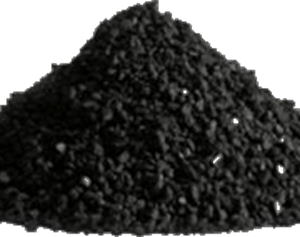Description
Isopropyl Alcohol 99%
From Wikipedia, the free encyclopedia
Isopropyl alcohol (also isopropanol, rubbing alcohol, or the abbreviation IPA) is a common name for propan-2-ol, a colorless, flammable chemical compound with a strong odor. It has the chemical formula C3H8O and is the simplest example of a secondary alcohol, where the alcohol carbon is attached to two other carbons. It is an isomer of propanol.
Uses
Sterilizing pads typically contain a 60-70% solution of isopropanol in water. Isopropyl alcohol is also commonly used as a cleaner and solvent in industry. It is also used as a gasoline additive for dissolving water or ice in fuel lines. Although Isopropanol is sometimes sold as “Isopropyl Rubbing Alcohol, 70%” and “Isopropyl Rubbing Alcohol, 99%” (harder to find but generally more useful for experimenters & cleaning uses), there is no isopropyl alcohol in the United States Pharmacopeia formula for Rubbing alcohol, U.S.P.. It is used as a disinfectant, and is a common solvent.
Isopropanol is a major ingredient in “dry-gas” fuel additive. In significant quantities, water is a problem in fuel tanks as it separates from the gasoline and can freeze in the supply lines at cold temperatures. The isopropanol does not remove the water from the gasoline. Rather, the isopropanol solubilizes the water in the gasoline. Once soluble, the water does not pose the same risk as insoluble water as it will no longer accumulate in the supply lines and freeze.
It is also a very good cleaning agent and often used for cleaning electronic devices such as contact pins (like those on ROM cartridges), magnetic tape deck and floppy disk drive heads, the lenses of lasers in optical disc drives (e.g. CD, DVD) and removing thermal paste from CPUs. It is also used to clean LCD and glass computer monitor screens (at some risk to the anti-reflection coating of the screen), and used by many music shops to give second-hand or worn records newer looking sheens. It cleans dry-erase boards very well and other unwanted ink related marks.
Chemistry
Isopropyl alcohol forms an azeotrope with water at 87.4% alcohol. It is impossible to dehydrate isopropanol further using standard distillation methods. For this reason, more expensive means, such as using a desiccant, are necessary for production of 100% isopropyl alcohol. Unlike ethanol or methanol, isopropanol can be separated from aqueous solutions by adding a salt such as sodium chloride, sodium sulfate, or any of several other inorganic salts. The process is called “salting out,” and causes concentrated isopropanol to separate into a distinct layer.
Being a secondary alcohol, isopropanol can be oxidised to the ketone acetone. This can be achieved using oxidising agents such as chromic acid, or by dehydrogenation of isopropanol over a heated copper catalyst:
(CH3)2CH-OH → (CH3)2C=O + H2
Isopropanol may be converted to 2-bromopropane using phosphorus tribromide, or dehydrated to propylene by heating with sulfuric acid. With sodium hydroxide and a halogen, or with sodium hypochlorite, it undergoes the haloform reaction. This means it would give a positive result for an iodoform test.
Isopropanol is often used as a hydride source in the Meerwein-Ponndorf-Verley reduction.
Like most alcohols, isopropyl alcohol reacts with active metals such as potassium to form alkoxides which can be called isopropoxides. The reaction with aluminium (initiated by a trace of mercury) is used to prepare the catalyst aluminium isopropoxide.
Isopropanol has a maximal absorbance at 204 nm in an ultraviolet-visible spectrum.
Safety
Isopropyl alcohol vapor is heavier than air and is highly flammable with a very wide combustible range. It should be kept away from heat and open flame. When mixed with air or other oxidizers it can explode through deflagration.
Isopropyl alcohol is oxidized by the liver into acetone. Symptoms of isopropyl alcohol poisoning include flushing, headache, dizziness, CNS depression, nausea, vomiting, anesthesia, and coma. Use in well-ventilated areas and use protective gloves while using. Poisoning can occur from ingestion, inhalation, or absorption.
Long term application to the skin can cause defatting.
Medicine/Toxicology
Isopropyl alcohol is about twice as toxic as ethanol. Isopropyl alcohol does not cause an anion gap acidosis (like ethanol or methanol). It produces an elevated osmolal gap, but generally no abnormal anion gap (though this may be seen as a result of hypotension and lactic acidosis). Overdoses may cause a fruity, acetone-like odor on the breath.






